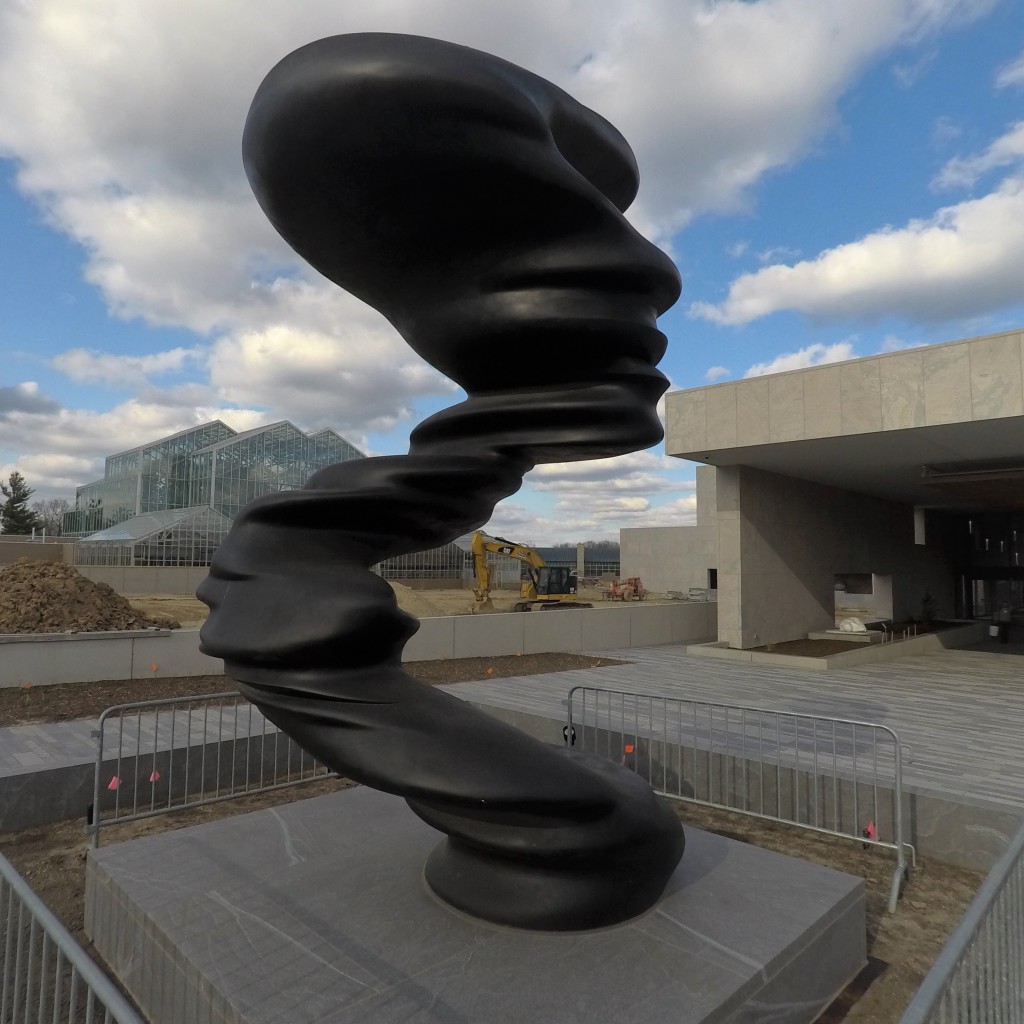
Others have pointed out how important the position of the lens can be in creating visual interest (tension or absence of it). Just an inch left or right, up or down, nearer or farther from the subject can alter the relationship of foreground and background juxtaposition. And Henri Cartier-Bresson‘s writings point to his childhood fascination with geometry as the basis for his professional life in composing pictures as he came to do.
This photo illustrates how a repeated shape or echo in one line to another can be eye-catching, causing a curious person with a camera to stop and frame a snapshot. In this case there is a fit between the bend in this statue and the bend in the yellow digger in the distance. It is not a perfect fit, but it is instead more of a family resemblance: recognizable, but not a perfect copy. In addition, the top right corner of the photo draws together several rectangles. When the eye notices first one and then additional ones of similar (rectilinear) character, then suddenly a revealed significance can sweep the person into a larger movement or meaning. A feeling of bigger (secret) patterns of meaning touches the viewer. Other repeating elements are the panels of glass for the tropical greenhouse in the distance, as well as the fencing pieces around the base of this statue.
Brain scientists have pointed out that two functions in humans that machines cannot yet match have to do with the ability to perceive meaningful patterns (machines first must be filled with a catalog of instances to match field conditions with) and the power to discover relatedness or relationships between discrete things, sometimes tangible, but other times figurative or symbolic (e.g. the foot of a bridge and the foot of a person). So it is not only when looking through a viewfinder that viewers can find meaningful patterns and relatedness, also in many other arenas of lived experience can one find such meanings. Maybe the patterns and relationships are between the lines or they arise only on the second viewing of a movie, or from long years of conversation with another person, but arise they do.
Echoing can be found in the likeness that can be seen at a family reunion, as certain physical features, mannerisms, or habits of talking and walking can be seen recurring across the generations. And echos of a different kind can be seen in synchronicity, the phenomenon of someone or something catching one’s notice at one moment and then the same person or thing coming to one’s attention again, seemingly by (meaningful) coincidence, when one completes an errand, travel, or project, for instance, expressing a sort-of pair of bookends. If not “eye catching” like the compositions captured visually, then perhaps in other ways one’s attention can be arrested by something catchy to one’s ears, compelling to one’s mind, or meaningful to one’s palate.
